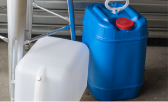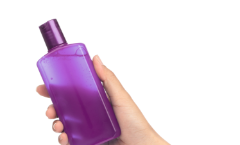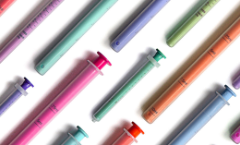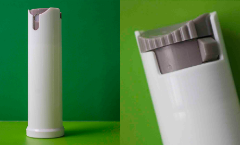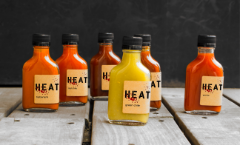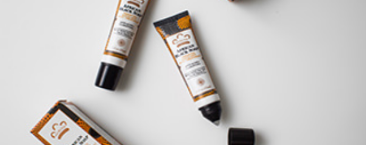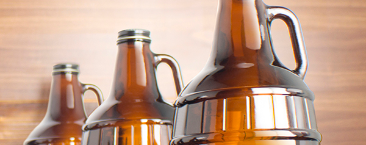






ENGINEERING
AND CREATIVE
SERVICES
Conceptualizing Your
Idea With Visuals

Safe Food Storage: Packaging and Handling Food Properly
Keeping food safe isn't just about avoiding bad smells or gross-looking leftovers: It's about protecting yourself from harmful bacteria that can cause serious illness. Learning proper food storage methods helps prevent waste, keeps your meals fresh, and ensures that you don't get sick from eating spoiled food. Whether you're storing snacks in your locker at school, packing yourself lunch, or putting away groceries or leftovers at home, understanding the basics of food safety is essential.
Containers
Using the right storage containers is an important part of keeping food fresh and safe. Airtight containers prevent bacteria and mold from growing, while leakproof options stop spills that can lead to cross-contamination. Glass containers are great for reheating food, since they don't absorb smells or stains, while plastic containers are lightweight and convenient to store and use. If you need to store dry goods like cereal or dried pasta, use sealed containers to keep out both pests and moisture. When using plastic food storage options, be sure to check that they're BPA-free to avoid the possibility of harmful chemicals leaching into your food.
Storage Basics
Once you have your food in a container, where should it go? Many foods belong in the refrigerator, but some don't. Some fruits and vegetables, like bananas, potatoes, and onions, should be stored at room temperature. Dry goods like pasta, rice, and flour should be kept in a cool, dry place away from direct sunlight. And perishable items like dairy, meat, and leftovers need to be refrigerated or frozen to stay safe. Always check the original packaging on your food for storage instructions and expiration dates. When in doubt, use your senses: If something smells bad, looks weird, or feels slimy, it's best to throw it out.
Refrigeration Tips
Your fridge should always be set to 40°F or lower in order to slow bacteria growth. Store raw meats on the bottom shelf to prevent their juices from potentially dripping onto other foods. Keep dairy and eggs in the main section of the fridge instead of on the door, where the temperature fluctuates more as the door is opened and closed. Don't overcrowd your fridge: Air needs to circulate between items to keep everything cool. And be sure to label all of your leftovers with the date they were stored and try to eat them within three to four days to avoid foodborne illness.
Freezing Foods
Freezing is a great way to make food last longer, but you need to do it correctly to maintain the quality and safety of your food. Use freezer-safe containers or bags to prevent freezer burn, which dries out food and affects its texture. Let hot foods cool down before freezing them; this helps to prevent ice crystals from forming. And label everything with the date it was frozen so you can use older items first. Most frozen foods will stay safe to eat indefinitely, but their quality will decline over time. Frozen meat is best used within a few months, while frozen vegetables can last in the freezer for up to a year.
Proper Food Handling
Washing your hands before and after handling food is one of the easiest ways to prevent spreading germs that can cause illness. Raw meat, poultry, and seafood should always be kept separate from ready-to-eat foods to avoid cross-contamination. Use different cutting boards for meats and vegetables, and always clean surfaces that have touched raw meat with hot, soapy water. When reheating leftovers, make sure they reach at least 165°F to kill any bacteria that could be lurking inside. And never leave perishable food sitting out at room temperature for more than two hours. If there's any doubt about how long food has been left out, it's safer to throw it away.
In Case of Emergency
Power outages or natural disasters can affect food safety, so it's important to know what to do in these situations before they happen. If the power goes out, keep the fridge and freezer doors closed as much as possible. Food inside a closed fridge stays cold for about four hours, while a full freezer can keep the food inside frozen for up to 48 hours. If your food has thawed and reaches a temperature above 40°F for more than two hours, it should be thrown away. Keep non-perishable foods like canned goods, granola bars, and peanut butter on hand for emergencies, and always have a manual can opener and jugs or bottles of water available in case there's a long-term power outage.
- Food Storage Guidelines for Consumers
- Safe Home Food Storage Guidelines
- Food Storage for Safety and Quality
- Better-Safe-Than-Sorry Food Storage Charts
- Safe Food Storage in the Refrigerator and Freezer
- Preserving Food With a Boiling Water Canner
- Plastic Beverage and Juice Bottles
- Preparing, Cooking, and Storing Food Safely
- Keeping Food Safe When Using Plastic Containers
- Food-Safe Glass Jars for Packaging and Storage
- Storing Food in the Refrigerator, Freezer, or Pantry
- Home Storage of Food on Your Pantry Shelves
LOCATIONS
CORPORATE OFFICE
3 MILLTOWN COURT
UNION, NJ 07083
(+1) 800 631 7392
O.BERK® OF NEW ENGLAND
300 CALLEGARI DRIVE
WEST HAVEN, CT 06516
(+1) 888 653 6657
O.BERK® | KOLS
10001 FRANKLIN SQUARE
DRIVE
SUITE D
NOTTINGHAM, MD 21236
(+1) 410 646 2300
O.BERK® WEST
13918 EQUITABLE ROAD
CERRITOS, CA 90703
(+1) 562 802 0515
LEGAL
PRIVACY POLICY PRIVACY REQUEST WEB FORM TERMS AND CONDITIONS TERMS OF USE DO NOT SELL / SHARE MY PERSONAL INFORMATION



